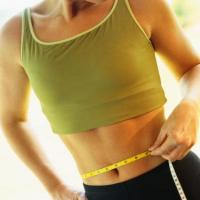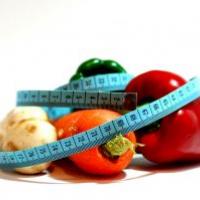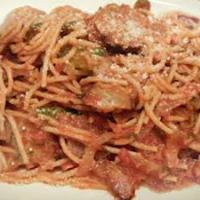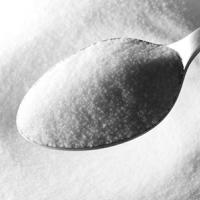Frequently Asked Questions (FAQ)
![]()
Frequently Asked Questions (FAQ)
By Doreen
1. First, and most important, I am going to assume that you have read at least one of the many excellent books explaining low carbohydrate and/or ketogenic diets. It's understandable that someone new to low carbing will have questions and might be a little confused about some information they have read. But it is frustrating when basic questions that are answered in detail in any of the books get asked over and over again - it's obvious the person hasn't even bothered to read and inform themself, and just wants a quick guide to "the plan". Sorry, doesn't work that way!! If you want to learn what low carbing is all about, read the Low Carb Basics section of our Tips page, and check out one or more of the listed books and websites.
2. Why do I have to "read the book"?? I will repeat myself here. Low Carbing isn't just a diet "plan", where you follow a regimented menu for a period of time, then go back to old eating patterns once the desired weight-loss is achieved. This is about lifestyle change, learning and understanding how and why food makes you healthy or takes health away. Educating yourself is simply the "responsible" thing to do.
3. You mean I can't have bread, pasta, rice or potatoes?? Carbohydrate foods are more than just sugars and sweets. Starches, especially refined starches such as white flour, white rice and white noodles and pasta - the backbone of standard lowFAT diets - are also carbohydrate foods, and are ultimately broken down by the body into sugars. Other carbohydrate-containing foods are cereals, whole grains, beans and legumes, fruits, vegetables, milk and other dairy products. Some meats contain carbs too - liver and other organ meats, clams, oysters, and especially processed lunch and deli meats, sausages, etc.
4. What's left to eat?? Protein foods - meats, poultry, fish, eggs, isolated protein powders (soy, whey, egg) - and fats - butter, pure lard, vegetable oils - are carbohydrate-free. Most cheeses, nuts, seeds and tofu contain a few carbs, but are generally low enough to fit well with a low carb eating plan. Low Carb vegetables - salad greens of all kind, spinach, broccoli, celery, eggplant, zucchini, green beans, asparagus, and much more. Some plans allow for a small amount of low carb fruit as well - eg. berries or melon. Most sugar-free diet foods are suitable, such as soft-drinks, gelatin desserts, etc - but read labels carefully. Sugar-free isn't always CARB-free. Arm yourself with a good food counts book, and you will find plenty of variety to eat! Check out our Tips page for Karen Barnaby's ideas to Jazz Up Your Induction , for delicious and fast menus.
5. What about cravings, and "withdrawal pains"?? Many people, but not all, experience unpleasant symptoms during the initial period of switching to low carb eating, such as intense cravings for sugars and sweets, or maybe headaches, fatigue or irritability. This is not a sign of illness, or a reason to quit. Your body needs to clear itself of the excess carbs in your system left over from your previous high-carb diet. Once your blood sugar and insulin levels have evened out, you will feel better, and cravings will disappear. Most people find this only takes a few days, for a few though, it may last over a week. The best "cure" for intense sweet cravings is to eat PROTEIN. Have frequent, small protein-containing meals and snacks throughout the day; this will prevent blood sugar swings which trigger the cravings. Drink plenty of fresh, plain water to keep yourself hydrated and to flush the system of metabolic wastes and by-products.
6. Do I need to check for ketones in my urine?? Some low carb programs recommend testing your urine for the presence of ketones. Dr. Atkins explains in detail the why's and the how's of ketosis and ketone testing in all of his books. Other programs do not require this testing, and some plans, such as the Zone, are not ketogenic at all. Make sure you are familiar with the plan you have chosen to follow, to find out if daily ketone testing is suggested. Some folks do not bother to test for ketones, even when following a specifically ketogenic diet. They prefer to go by the scales, and how their clothes fit as an indicator of success. Others need the daily reinforcement of knowing they are in ketosis, especially if the scales aren't moving. It's up to the individual and the particular program chosen.
7. Do I need to weigh myself every single day?? This is up to the individual. Some believe in weighing once a week only, because normal day-to-day fluctuations can be frustrating. Others, including myself, weigh every day, because we find it helpful to see the daily fluctuations and possibly using the weight gains and losses as indicators for modifications of the eating plan - eg, over-consumption of fruit causes a gain, so learn to cut back or avoid that food. Women also may experience a gain just prior to their menstrual period. Again, some may choose to avoid the scales at that time, others find it helpful to track their progress. For instance, since low carbing, I now find my monthly weight gain is much less, maybe a pound or two, unlike previously when it was not unusual for me to pack on an extra five or more pounds each month.
8. What about vitamins, minerals and supplements?? This is up to the individual, but most of the programs recommend taking at least a good quality multiple vitamin and mineral supplement every day. Check the specific guidelines for the plan you have chosen for information on recommended supplements. In any case, check the label to be sure the product you buy is sugar- and starch-free.
9. What's so important about drinking a lot of water?? Second only to oxygen, water is the most vital substance required by our bodies, whether we are on a diet, or no diet at all. Yet so few of us do drink fresh, pure, plain water. Instead, we drink soda pop, or tea and coffee, juice or sugary fruit drinks, milk - anything but water!! Drinking LOTS of water is especially important when low carbing, to flush out the metabolic wastes and by-products of all that fat burning. It is generally recommended that you drink 64 fluid ounces of pure, plain water, plus an additional 8 ounces for every 25 lbs you want to lose - every single day.
10. What about caffeine, and alcohol?? Dr. Atkins recommends avoiding caffeine because it may trigger insulin. Some of the other plans do not make a comment one way or the other. If you find you tolerate caffeine-containing beverages and foods without affecting your weight loss, then you might decide you wish to continue to do so. Other people may find it best to avoid caffeine because it stalls the weight loss, or they experience effects such as jitters, nervousness and insomnia. Caffeine is most commonly found in coffees, but is present also in teas, chocolate, colas and some other soft drinks, as well as some pain-reliever tablets and cough remedies. Read the label carefully if you're not sure. Alcohol is generally considered low carb, in the form of unsweetened distilled spirits or bone-dry wine. Be aware though, that alcohol is a readily-burned fuel, and as such, your body will use it instead of your fat as an energy source. Moderation is the rule. Another problem is of course, a few drinks may impair one's judgement, leading to eating indiscretions and high-carb bingeing. Be aware, and be prepared. If you plan to have some wine or a mixed-drink, make sure you are having it with some protein food, and drink plenty of water before and after too. And make sure your mixed drink is made with zero-carb mixer, such as club soda or diet soft drink.
11. What about artificial sweeteners?? More and more, people are finding they react unfavourably to aspartame (Equal, Nutrasweet) and are choosing to avoid it, although it is certainly the most commonly used sweetener in commercial diet products. In Canada, many diet products are now made with a blend of aspartame and acesulfame-potassium (ace-K, Sunette), a non-absorbed, non-caloric, 0-carb sweetener, which ultimately means LESS of either product is required to provide a sweet taste. Sucralose (Splenda) is a relative newcomer to the artificial sweetener family. It looks and tastes like real sugar, and is heat-stable, which means it doesn't lose sweetness when you cook or bake with it. So far, it is passing all safety tests with flying colours, and appears to be well-tolerated by just about everybody. More and more commercial products are being made using sucralose, so keep an eye on your grocer's shelves. Cyclamate (Sucaryl, SugarTwin) is also widely available in Canada, but only as a "tabletop" sweetener. It is not used in commercially prepared foods or beverages. There is still a small amount of controversy that cyclamate MAY be linked to some forms of cancer in lab rats, but it has never been proven in humans, in over 30 years of product consumption. The choice is yours. SugarTwin is slightly lower in carbs than Splenda, and is also heat-stable and suitable for use in cooking and baking. It also comes in a brown sugar flavour, which some enjoy. Many cooks find that mixing sweeteners enhances the sweet taste, lessens any bitter after-taste, and reduces the total amount of sweetener required. For example, if a recipe calls for 10 packets of Sweetener A. you could try mixing 4 packets each of Sweetener A and Sweetener B to achieve the same sweet taste.
12. What are protein powders, and protein shake mixes?? There are three basic kinds of protein powder/shake mixes - soy isolate, whey protein isolate, and egg. They are usually available in flavours such as vanilla, chocolate or strawberry, and occasionally in plain or unflavoured as well. Protein shake mixes are handy and versatile to make a high-protein, low carb snack or meal-replacer. Note** read the label to make sure the product you buy is indeed low carb. Some sport drinks and "weight" or "muscle" gainer formulas are very HIGH in carbs. Make a visit to your local health food or sport nutrition store, and see what they have to offer. Don't be put off by the pictures of muscle-bound athletes on the canister!! Unflavoured soy and whey protein isolate powders are also great to use in cooking, to boost the protein content of recipes.
13. Do I need to exercise?? Anything you do to move your body will burn fat. Since you're not eating carbs for fuel, this will further enhance the fat-losses induced by a low carb diet. Exercise also builds muscles; increased muscle will boost your metabolic rate, thus burning even more fat. There will always be some person to say they didn't lift a finger and lost weight, but for most of us, any exercise will definitely help our efforts. It doesn't have to be elaborate, you don't need to invest a fortune in expensive equipment or annual gym fees. Walk the dog, play with the kids, dance around the living room! Just get moving, because it will help you lose weight and it's FUN.
14. I cheated. Do I need to start over?? It would be a good idea to go back to Induction or early Intervention levels of the low carb plan you have chosen to follow, for a week or at least a few days to clear the excess carbs from your system and to get back into fat-burning mode. Many low carbers experience unpleasant symptoms after a high-carb cheat, such as nausea, bloating, diarrhea, mood swings - all brought on by the sudden surges and dips in blood sugar and insulin. This becomes a great motivator to stick with the low carb WOE, and to not stray very often.
15. What are "hidden carbs"?? Generally, plain meats, poultry and fish contain no carbs. However, commercially processed meats, etc can have carbs added that you may not suspect - sausages and meatloaves may contain breadcrumbs, milk ingredients and sugars; bacon, ham, pastrami and other cured meats are made with sugar, corn syrup or dextrose, and many canned fish products contain sugar or starch-added sauces. Always read the label to be sure. Other sources of carbs that often get overlooked are coffee, and the cream and packets of sweetener used. These can add up quickly if you drink a lot of coffee through the day. Coffee has 0.8 carb grams for a 6 fluid ounce cup. That's a small cup. Think about it, especially during Induction or early Intervention phases of your low carb program. Avoid anything "lowfat", they are almost always high in carbs. Salad dressings and condiments can add up too, and make sure you are accurately measuring your allowed vegetables. 1/2 cup of broccoli is not 2 cups of broccoli. And remember to count the carbs in those breath mints and sugar-free gum. Cheese and cream are often overlooked as a source of carbs, so know how much you are consuming. If you are honest and accurate, you will see that there really are no "hidden" carbs. Read labels carefully, and get yourself a good carbohydrate gram counter.
16. Good luck, and happy low carbing!
- Prev:Low Carb Basics
- Next:Jazz-up your Induction
-
Low Carb Dinner Recipe Ideas
The best way to lose weight is to make a lifestyle change. You need to
-
Starting a High Protein, Low Carb Diet
Many people around the country and around the world need to lose weigh
-
Atkins Buying Ideas
Once you begin the Atkins diet, youre getting into a new world of eat
-
Low Carb Diets - What A Low Carb Diet For Pregnancy
Often when pregnancy is with us there are many friends and relations
-
How To Select A Good Low Carb Diet
It seems a new fad diet springs up every other day. Some of these fad
-
What Is Ketone
What is ketone-based dietary theory all about? Well, f
- DON'T MISS
- Tips To How To Eat Healthy
- The way to Clean and Rebuild Carburetors (1)
- Ricotta and Espresso Cream
- Low Carb Diet Meals are All the Rage
- Low Carb Diets and You: Is It Right?
- Muscle Enhancement - Low Carb Low Glycemic Whey Protein Supplement
- Stracciatella - Italian Egg Drop and Parmesan Cheese Soup
- Low Carb Dieting, Exercise And Weight Loss
- Low Carb Foods - Carb Reduction Diets And Menus
- Deciding If This Alternative Is Right For You




